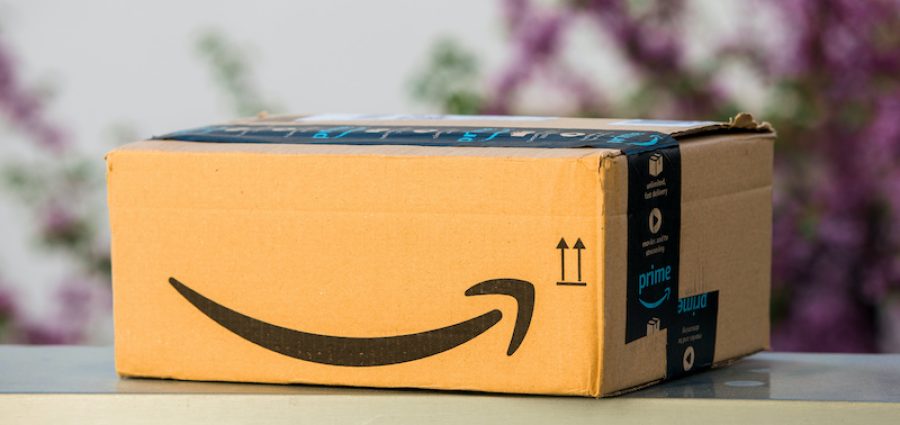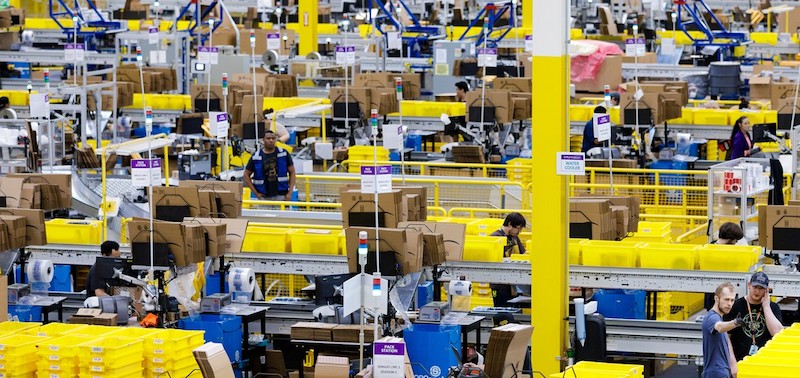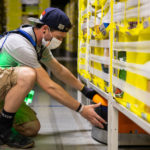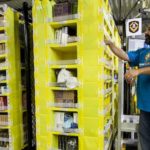Amazon.com Inc. has announced a handful of new fulfillment centers in the U.S. in the last weeks, including massive facilities in Pflugerville, Texas (near Austin), El Paso, Texas, and Tampa Bay, Florida, greatly enhancing delivery capabilities in those regions.
But the Seattle, Washington-based online giant — which many distributors continue to see as a threat while others use it as a platform for B2B selling (and companies sometimes fall into both categories) — is exploring bringing even more fulfillment centers to American communities by converting portions of shopping malls into Amazon warehouses.
According to a report over the weekend from the Wall Street Journal (subscription required), Amazon is in talks with Simon Property Group Inc. for the retailer “to take over space left by ailing department stores.”
The company would occupy the spaces where the now-bankrupt J.C. Penney Co. Inc. or Sears Holding Corp. once anchored malls across America before filing for Chapter 11 and shuttering numerous locales.
“Simon Property Group Inc. has been exploring with Amazon the possibility of turning some of the property owner’s anchor department stores into Amazon distribution hubs, according to people familiar with the matter,” wrote the article’s authors, Esther Fung and Sebastian Herrera. “Amazon typically uses these warehouses to store everything from books and sweaters to kitchenware and electronics until delivery to local customers.”
However, the article continued, “It wasn’t clear how many stores are under consideration for Amazon, and it is possible that the two sides could fail to reach an agreement, people briefed on the matter said.”
Still, the notion of Amazon taking over square footage in the suburban mall — that paragon of American consumerism — is stunning. And it speaks to Amazon’s soaring growth during the pandemic.
“To replace department stores, mall owners considered schools, medical offices and senior living,” Camille Renshaw, CEO of B+E, a real-estate investment brokerage firm, told the Journal. “With the current pandemic, industrial is the only thing left now.”
Finding New Ways to Serve Customers
The move comes amid a rapid shift toward more e-commerce, and while this potential move by Amazon is geared more toward B2C delivery, it serves as another clear shot across the bow aimed at wholesale distributors.
“Malls’ strategic locations often make them attractive as distribution hubs,” the Journal article said. “Many are near main highways and residences. Amazon has already acquired the sites of some failed malls and converted them to fulfillment centers. FedEx Corp. and DHL International GmbH have done the same.”
What’s more, Amazon (which reported 40% growth during 2Q) in early June announced it is leasing 12 Boeing 767-300 converted cargo aircraft, adding to the company’s existing fleet of 70 aircraft. The expanded cargo capacity will allow Amazon to meet evolving demand and a growing customer base — including COVID-19-related PPE and other consumer purchases.
“Amazon Air is critical to ensuring fast delivery for our customers – both in the current environment we are facing, and beyond,” said Sarah Rhoads, VP Amazon Global Air. “During a time when so many of our customers rely on us to get what they need without leaving their homes, expanding our dedicated air network ensures we have the capacity to deliver what our customers want: great selection, low prices and fast shipping speeds.”
Amazon’s aim at wholesale distribution came into focus during the last six months of the coronavirus crisis.
As MDM outlined in a June 12 blog, Amazon on March 31 launched COVID-19 Supplies on Amazon Business in the United States, working with thousands of distributors — many new to Amazon Business — to deliver PPE supplies. Products include face shields, surgical masks, ventilators, digital thermometers, exam gloves, medical gowns, sanitizers and wipes that have been sent to more than half of the top-100 hospital systems in the country and 44 of the 50 state governments, according to Amazon.
The company delivered more than 100 million essential health and safety products to health care and government organizations across the U.S. during the beginning few months of the pandemic, eventually doubling that number by the end of 2Q.
“We’re using our expertise and resources to find, distribute, and deliver these vital products to help alleviate the supply shortages affecting those on the front lines,” said Alexandre Gagnon, vice president of Amazon Business Worldwide, in a release. “I’m proud of our teams who have engaged with thousands of new manufacturers and suppliers around the world to source products for this effort.”
The addition of fulfillment centers in potentially dozens of new towns across the U.S. gives Amazon another edge when it comes to delivering products more quickly and efficiently to customers — perhaps even some of yours. And while most distributors can’t compete with Amazon’s growing footprint of fulfillment centers, they can add or enhance capabilities such as e-commerce to ensure their meeting customers’ needs.
It’s no wonder that in response to the recent MDM survey question, “Which new technologies, if any, do you anticipate exploring in the next 12 months?”, e-commerce was the overwhelming top choice with almost half of respondents listing it as a priority.
Also, e-commerce was the second-highest response (61% of participants) when asked “How are you planning to build revenue over the next 12 months?”
The message here: Amazon might be coming to your customers’ backyards. But providing more shopping and purchasing options could keep the world’s largest retailer out of your customers’ wallets.
Related Posts
-
Amazon's new 820,000 square-foot site in the city of Pflugerville will create 1,000 new, full-time…
-
New 625,000 square-foot site in the city of El Paso — the second facility coming…
-
Amazon's new fulfillment center in Temple Terrace and new delivery station in Lutz will create…






